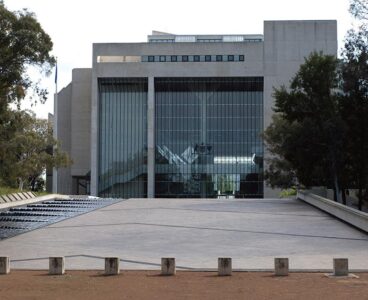
Terror laws: Australian Human Rights Commission, AFP weigh in on review
A controversial law that aims to keep terrorists behind bars after the completion of their prison sentences is under review.
On Monday the Independent National Security Legislation Monitor (INSLM), Grant Donaldson SC, continued his assessment of Division 105A of the Commonwealth Criminal Code.
The law was introduced in September 2016 to authorise the continued detention of “high risk” offenders who the court has decided would pose an unacceptable risk of committing a serious terrorism offence if released from prison.
Division 105A allows the court to authorise a continuing detention order (CDO) to keep extremist offenders behind bars for three years after they’ve completed their sentence.
The legislation was designed to target offenders with a particularly high risk of recidivism; for example, a person convicted of using explosive lethal decides or recruiting.
The AFP revealed it is currently monitoring five former terrorist offenders in the community, with a further interim control order application before the court.
In addition, 20 of the 54 offenders serving terrorism sentences in Australia are scheduled for release within the next five years.
There are also another 26 alleged terrorist offenders before the courts.
“The number of offenders who have been put on orders are relatively few,” noted Richard Peakes, first assistant secretary of the Counter Terrorism Centre.
Abdul Nacer Benbrika was the first person held under a CDO after serving a 15-year sentence for directing a terrorist organisation.
His order can be used to hold him until December 2023, at which time another three-year-detention order must be applied for.
Speaking at the review hearing on Monday, Australian Human Rights Commission (AHRC) head Lorraine Finlay said she found the assessment process used to identify whether an offender was a “high risk” of reoffending “problematic”.
“It may be that this risk-assessment tool is the best tool available, but if it is an inadequate tool in terms of assessing future risk, well then that’s problematic,” Ms Finlay said.
She said part of the issue was that there hadn’t been the public research and understanding developed in relation to the risk-assessment process.
“It is enormously concerning to us that these sorts of questions are being raised and that there doesn’t seem to be an avenue to ensure that the risk-assessment process allows us to meet that requirement of proportionality,” she said.
The AHRC suggested two main ways the legislation could be adjusted to meet Australia’s international human rights obligations.
The first was that courts should be made aware of the limitations of existing risk-assessment tools to determine an offender’s risk level.
Secondly, Ms Finlay suggested the creation of an independent risk management body that accredited experts, conducted research, and developed risk-assessment tools.
This would ensure that an offender’s “risk” level was assessed in an “objective, independent way”.
A similar system exists in Scotland – the Scottish Risk Management Authority – and has operated since 2005.
Mr Donaldson agreed risk assessment was a particular focus for the legislative review.
“We cannot have a tool which is not an accurate tool (determining) whether people should remain in prison,” he said.
“This is a very important piece of legislation and this is an important issue. Risk assessment is at the core of this.”
The AHRC also supports an amendment to Division 105 A to include the rehabilitation and reintegration of offenders into the community.
This would bring the commonwealth in line with the state legislation in NSW, Victoria, Queensland and the Northern Territory.
Mr Donaldson said national consistency was a high priority for the legislative review.
“What we cannot have happen in a Commonwealth scheme is that we have different terms of detention in different states,” he said.
First Assistant Secretary of Security and Counter-Terrorism Division, Brooke Hartigan, told the review hearing that the commonwealth’s post-sentence order regime “is in its early stages”.
She said commonwealth departments were committed to ensuring the legislation was “fit for purpose”.
The Independent National Security Legislation Monitor noted many like-minded countries like New Zealand and the UK did not have policies of continuing detention, despite serious terrorist attacks.
“It seems to me that we’re a bit of an outlier in relation to this,” he said.
“I don’t think that the way we’ve responded to this issue is just a little bit different to others, I think it’s fundamentally different.”
Ms Hartigan said the continuing detention orders were only intended as a “last resort”.
“We realise it’s a serious (direction) but we have the mindset that it’s for the most extreme circumstances,” she said.
Former Attorney-General George Brandis said at the time of the legislation’s inception that terrorist offenders released from prison posed a “significant public safety issue”.
“There is no existing Australian regimen for managing terrorist offenders who may continue to pose an unacceptable risk to the community following the expiry of their sentence,” he said.
“There may be some circumstances where, even with controls placed upon them, the risk an offender presents to the community is simply too great for them to be released from prison.
“This is a significant public safety issue.”
Source: Theaustralian





